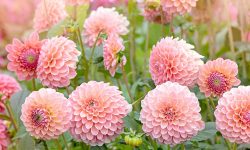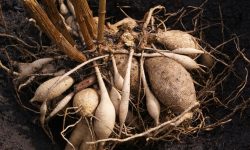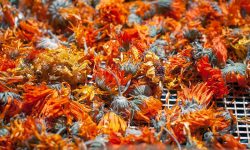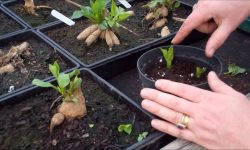Understanding the Toxicity of Oleander
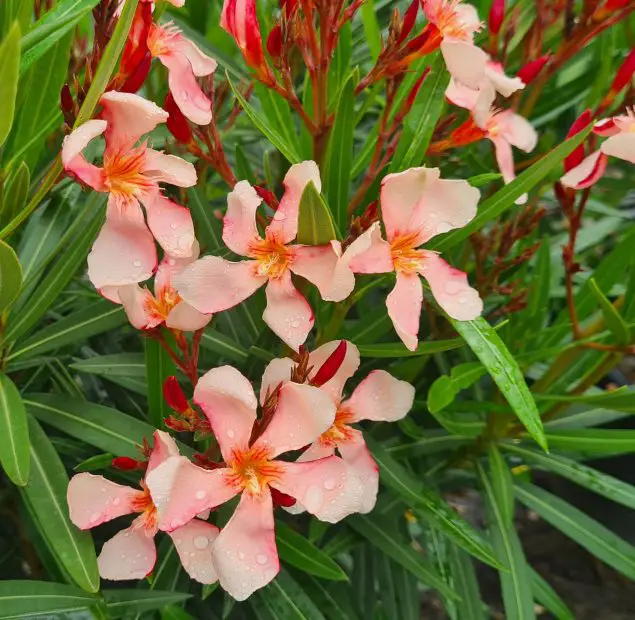
What Makes Oleander Poisonous
Oleander is considered highly toxic due to the presence of powerful cardiac glycosides, particularly oleandrin and neriine. These compounds directly affect the heart and nervous system by disrupting the body’s normal electrical impulses. When consumed, even in small amounts, they can trigger dangerous symptoms such as irregular heartbeat, nausea, dizziness, and in severe cases, respiratory failure or death. The plant’s toxicity is not diminished by drying or wilting, which makes it a long-term hazard in gardens where children or animals might come into contact with it.
Parts of the Plant That Are Toxic
Every part of the oleander plant contains toxic compounds. The leaves, flowers, stems, roots, and even the sap all hold enough poison to cause serious harm. What makes oleander especially dangerous is that its dried parts are just as toxic as the fresh ones. Fallen flowers or dead leaves on the ground can still pose a threat if ingested or handled without care. Even minimal contact with the sap, such as from broken stems, can lead to mild skin irritation or poisoning if it enters the mouth or eyes.
How Toxic Is Oleander?
Oleander is toxic at remarkably low doses. For an adult, ingesting a single leaf may be enough to cause serious cardiac symptoms. In children, the threshold for poisoning is even lower. For pets such as dogs, cats, or even livestock, chewing on a few leaves, licking the sap, or eating contaminated clippings can lead to rapid onset of symptoms like vomiting, drooling, weakness, abnormal heartbeat, or even collapse. Because of its potency and the fact that it looks attractive, oleander presents a silent but real risk in both home gardens and public landscapes.
Symptoms of Oleander Poisoning
In Humans
Symptoms of oleander poisoning in humans usually appear within a few hours after ingestion or exposure. The earliest signs often include nausea, vomiting, abdominal pain, and dizziness. As the cardiac glycosides from the plant begin to interfere with the heart’s electrical signals, more serious symptoms may follow, such as slowed or irregular heartbeat, low blood pressure, blurred vision, and confusion. In severe cases, especially when a larger quantity is ingested, the individual may experience fainting, seizures, or even cardiac arrest. Death can occur without prompt medical treatment. Even handling oleander and accidentally ingesting trace amounts through hand-to-mouth contact can lead to mild symptoms, particularly in those with sensitive skin or compromised health.
In Children
Children are especially at risk because of their smaller body size and natural curiosity. Just a small part of a leaf or flower may be enough to trigger symptoms. A child who touches an oleander plant and then puts their fingers in their mouth could become poisoned even without directly chewing the plant. Symptoms in children typically include vomiting, drowsiness, weakness, low pulse, and confusion. Their condition may worsen rapidly, so immediate medical attention is essential, even if only minor exposure is suspected.
In Pets
Oleander is highly toxic to many types of pets, including dogs, cats, horses, goats, and birds. Signs of poisoning in animals can include excessive drooling, vomiting, diarrhea, abdominal pain, and lethargy. In more serious cases, pets may exhibit muscle tremors, collapse, or develop life-threatening arrhythmias. Some animals may attempt to chew the plant out of curiosity or boredom, while others may be exposed indirectly through garden trimmings or wilted flowers. Prompt veterinary care is critical, as early treatment can greatly improve the chance of recovery.
Oleander and Skin Contact
Risks from Handling Oleander
Although oleander poisoning most commonly occurs through ingestion, skin contact with the plant’s milky white sap can also pose health risks. The sap contains the same toxic cardiac glycosides—such as oleandrin—that make the plant dangerous when consumed. Direct contact may cause mild to moderate skin irritation, especially in people with sensitive skin. Reactions can include redness, itching, swelling, or the development of a rash. In some cases, the sap may also cause inflammation or stinging if it enters the eyes. Gardeners handling oleander frequently or pruning damaged branches are at greater risk, as the sap is more likely to be released when the plant is injured.
Protective Measures
When working with oleander, it’s essential to take safety precautions to minimize the risk of skin exposure. Always wear protective gloves, long sleeves, and, ideally, safety glasses—especially when pruning, trimming, or disposing of cut branches. Avoid wiping your face or touching your eyes while handling the plant. If sap accidentally gets on your skin, wash the affected area immediately and thoroughly with soap and water. If it enters your eyes, rinse with clean water and seek medical advice if irritation persists. Also, clean all gardening tools and gloves after use to prevent accidental exposure in future tasks. These simple steps can greatly reduce the chances of contact-related irritation or reactions.
Pets and Oleander: Special Considerations
Dogs and Oleander
Dogs are naturally curious and often use their mouths to investigate new things in their environment. This behavior makes them especially vulnerable to oleander poisoning, even if they only chew briefly on a leaf or stem. The cardiac glycosides in oleander can disrupt a dog’s heart rhythm within hours, leading to symptoms like vomiting, drooling, weakness, or a sudden collapse. Without immediate veterinary intervention, the toxicity can quickly become life-threatening.
Cats and Oleander
Cats, although more selective eaters than dogs, are still at risk—especially because they often groom themselves. If a cat brushes against oleander and later licks its fur, it may ingest the toxic sap. Even minimal exposure can result in symptoms such as loss of appetite, lethargy, slowed heart rate, tremors, or seizures. Because cats have smaller bodies, the toxins can take effect more rapidly and with greater severity than in larger animals.
Horses and Livestock
Horses, goats, cattle, and sheep may unknowingly consume oleander leaves while grazing, particularly if the plant grows near pastureland or if clippings are left where animals can reach them. Oleander is extremely toxic to large animals—just a few leaves can cause fatal arrhythmias in horses. Signs of poisoning include colic, diarrhea, muscle tremors, and collapse. Because dried oleander retains its toxicity, hay contaminated with oleander debris can be just as dangerous as fresh material. Keeping oleander far from grazing areas and ensuring secure fencing is critical for preventing accidental exposure.
Emergency Response and First Aid
What to Do If a Human Is Exposed
If a person has ingested any part of an oleander plant—whether leaf, flower, or even water from a vase containing oleander—treat the situation as a medical emergency. Do not induce vomiting unless specifically advised by a poison control specialist or medical professional, as this can sometimes worsen the effects or cause aspiration. Immediately call your local emergency number or poison control center and relay all relevant information, including what part of the plant was consumed, how much, how long ago, and the person’s age and weight. While waiting for help, try to keep the individual calm and still, as physical exertion may strain the heart and worsen symptoms.
What to Do If a Pet Is Exposed
If you believe your dog, cat, or other animal has chewed or ingested oleander, seek veterinary help without delay. Do not wait for symptoms to appear, as early signs—like vomiting, excessive drooling, irregular heartbeat, or weakness—can escalate rapidly. Call your vet or a 24-hour animal poison control hotline and follow their instructions. If possible, bring a sample of the plant to help identify the exposure. Avoid giving your pet any home remedies, food, or water unless directed by a professional, as this could interfere with emergency treatment.
Available Treatments
Treatment for oleander poisoning depends on the speed of response and the severity of symptoms. In medical or veterinary settings, activated charcoal may be administered to bind the toxins in the digestive tract and reduce absorption. Intravenous fluids are often used to support hydration and circulation, while continuous heart monitoring is essential due to the high risk of arrhythmias. Medications may be given to manage seizures or correct heart rhythm abnormalities. In severe human cases, digoxin-specific antibody fragments (Digibind) may be used as an antidote. Prompt treatment significantly improves outcomes, but in all cases, supportive care and close monitoring are crucial for recovery.
Growing Oleander Responsibly
Safe Landscaping Practices
When incorporating oleander into your garden, thoughtful placement is crucial to protect people and animals. Never plant oleander near play areas, walking paths, or places where children, dogs, or other pets frequently roam. Instead, consider placing it in decorative containers or raised beds in low-traffic zones of your yard, where access can be more easily controlled. If you use oleander for its dense, evergreen foliage or colorful blooms, avoid using it as a border hedge near schools, parks, dog parks, or community centers. For added safety, consider planting thorny or unattractive companion plants around it to discourage contact.
Labeling and Awareness
Because oleander is so beautiful, people may not immediately recognize its danger. To reduce risk, always label oleander plants clearly in shared or public garden spaces. Include signage that warns of its toxicity to both humans and animals. If you live with children or have visitors who bring pets, inform them proactively about the dangers. Gardeners, landscapers, and caretakers should also be trained to handle oleander safely. If you’re part of a homeowner’s association or neighborhood group, consider including oleander warnings in community newsletters or online forums.
Disposal of Pruned Material
All parts of the oleander plant—including dried branches and wilted flowers—remain toxic after pruning. Never add pruned material to compost piles, as the toxins do not break down reliably and may contaminate the soil. Instead, wear gloves and long sleeves when trimming to avoid skin irritation or accidental sap exposure. Place all clippings in sealed plastic bags or securely closed yard-waste bins. If your municipality allows, consider burning the pruned material in a safe, legal manner, although this should be done with extreme caution—oleander smoke can also be toxic if inhaled. Always wash your hands and tools thoroughly after handling oleander.
Non-Toxic Alternatives to Oleander
Safe Flowering Shrubs
Gardeners looking for vibrant color but concerned about oleander’s toxicity can turn to a variety of flowering shrubs that are both beautiful and safer. Butterfly bush (Buddleia) is a pollinator magnet, producing fragrant, cone-shaped blooms that attract butterflies and bees. It’s drought-tolerant and thrives in sunny spots. Hibiscus, with its large tropical flowers, adds a bold splash of color and grows well in warm climates. Azaleas are another excellent choice, offering a range of flower colors and sizes, though it’s important to note that some varieties can still be mildly toxic to pets, so supervision is wise. These plants enhance your landscape without the severe risks associated with oleander, especially in homes with frequent visitors or open garden spaces.
Child- and Pet-Safe Options
For households with young children or curious pets, safety is paramount. Lavender not only adds soothing purple blooms but also offers a calming fragrance and can be used in culinary or wellness applications. It’s deer-resistant and tolerates dry conditions well. Camellias are evergreen shrubs that bloom in cooler months, producing elegant, rose-like flowers in shades of red, pink, and white. They’re safe and long-lived, making them perfect for low-maintenance gardens. Viburnum, a diverse genus of shrubs, features clusters of white or pink flowers followed by attractive berries. Most varieties are non-toxic and easy to grow in various climates. These plants allow you to enjoy a lush, colorful garden while keeping your outdoor spaces welcoming and safe for everyone.
Frequently Asked Questions About Oleander Safety
Is any part of the oleander plant safe to touch?
No part of the oleander plant is considered completely safe. While casual skin contact might not always cause a reaction, the sap can cause irritation, redness, or even allergic responses in sensitive individuals. It’s especially important to wear gloves and protective clothing when pruning or handling the plant, as exposure to broken stems or leaves increases the risk. Always wash your hands thoroughly after contact.
Can oleander poisoning occur from inhaling smoke?
Yes, burning oleander can be extremely dangerous. Inhaling smoke from oleander leaves or stems releases toxic compounds, including oleandrin, which can affect the heart and respiratory system. This risk applies to both humans and animals. Never burn oleander trimmings or allow them to be added to firewood piles or green waste fires.
How long do oleander toxins remain active in dead plant material?
Oleander toxins remain potent even after the plant has dried. This means that dead leaves or trimmings are still dangerous and should not be composted, burned, or left in areas accessible to children, pets, or wildlife. Proper disposal—such as bagging and removing waste with household trash—is essential for safety.
Are all varieties of oleander equally toxic?
Yes, all types of oleander—whether pink, white, yellow, or dwarf cultivars—contain similar levels of cardiac glycosides, which are highly toxic. There is no known non-toxic variety of oleander. Gardeners should take equal precautions with every form of the plant, regardless of size or flower color.
What should I do if my pet ate oleander but seems fine?
Even if your pet shows no immediate symptoms, you should contact a veterinarian or animal poison control center right away. Oleander poisoning can take hours to present symptoms, and early treatment significantly improves outcomes. Do not wait for vomiting, lethargy, or abnormal heart rhythms to appear. Time is critical in toxic exposures.
Final Thoughts: Balancing Beauty with Safety
Oleander is undeniably beautiful, with its lush foliage and long-lasting blooms. However, its danger to humans and pets must not be underestimated. Understanding the risks and practicing safe gardening habits can allow you to enjoy this plant responsibly. If you live with pets, children, or frequent guests, you may want to choose a less toxic alternative to ensure peace of mind in your garden. Safety, awareness, and proper care are key to maintaining both a vibrant landscape and a healthy home.

